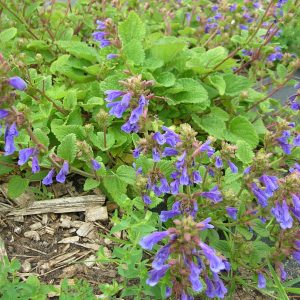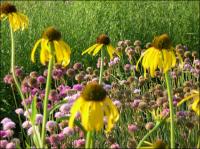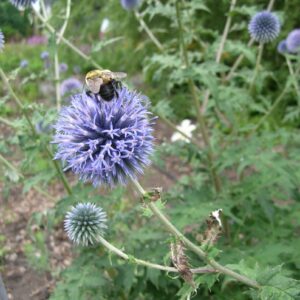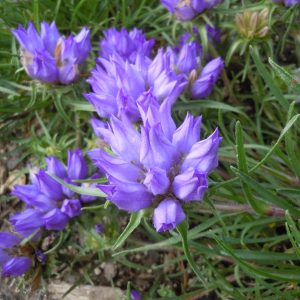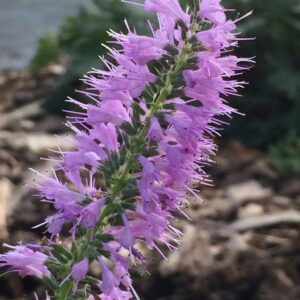Perennials & Biennials
Showing 161–168 of 511 results
-
Dracocephalum grandiflorum Bigflower dragonhead Z 3-8
Intense blue hood-shaped flowers in summer
OUT OF STOCK
Intense blue hood-shaped flowers in summer
Size: 6”x 8”
Care: full sun in moist, well-drained soil
Native: SiberiaDracocephalum is Greek meaning “dragonhead” referring to the shape of the flower. Introduced to gardens by 1759. Grown in American gardens since 1850’s. William Robinson, father of the mixed perennial border, described this as “very dwarf” having “large clusters of intensely blue flowers.” Sanders considered it an “excellent plant for a sunny rockery.” 1913.
-
Dracocephalum rupestre in China mao jian cao Z 4-8
True deep blue, hooded flowers rise above heart-shaped, crinkled foliage in the heat of mid-summer
True deep blue, hooded flowers rise above heart-shaped, crinkled foliage in the heat of mid-summer
Size: 12’ X 12”
Care: sun to part shade in well-drained to moist well-drained soil
Native: Western China in alpine meadows and grassy slopesFirst named in the West in 1867, Journal of Botany, British and Foreign, Vol 7 p. 166. Dracocephalum means “dragonhead” in Greek. Chinese made a tea from this.
-
Dryas drummondii Drummond’s mountain avens, Yellow mountain avens Z 3-9
Mat of leathery, wrinkled, creeping foliage, glossy green turning bronze in fall, oval with rounded teeth. From May through July leafless, erect flower stems rise 4-8” above the ground-hugging leaves, with nodding 8 to 10 buttercup yellow petals emerging from a fuzzy, decorative cup.
OUT OF STOCK
Mat of leathery, wrinkled, creeping foliage, glossy green turning bronze in fall, oval with rounded teeth. From May through July leafless, erect flower stems rise 4-8” above the ground-hugging leaves, with nodding 8 to 10 buttercup yellow petals emerging from a fuzzy, decorative cup.
Size: 6-10” x 12-24”
Care: sun in well-drained soil. Drought tolerant
Native: Alaska south to Washington east to Montana, most of Canada1st collected in seed by Sir John Richardson (1787-1865) Scottish naturalist on Franklin’s 1st overland expedition to the Arctic coast, 1819-1822. Franklin called the expedition “disastrous” but went again. Both Richardson and Thomas Drummond (1793-1835) collected this in seed and flower on Franklin’s 2nd overland expedition to the Arctic coast. (1825-1826) It is named to honor Thomas Drummond at Richardson’s request. Curtis’s Botanical Magazine v. 57 ser. 2 (1830). Richardson then led a 3rd expedition searching for Franklin’s last Arctic expedition, finding no trace of the lost ships or men.
-
Echinacea pallida Pale purple coneflower Z 4-8
Narrow, weeping pink rays in early to mid-summer surround its coppery-orange, hedgehog-like cone.
Narrow, weeping pink rays in early to mid-summer surround its coppery-orange, hedgehog-like cone.
Size: 2' x 14"
Care: Full sun in well-drained soil. Drought tolerant.
Native: much of continental US east of Colorado
Wildlife Value: deer resistant. Nectar feeds butterflies and hummingbirds. Birds eat seeds
Awards: Great Plants for Great PlainsEchinacea is Greek meaning hedgehog referring to the bristly conehead. Used to cure many ailments – arthritis, rheumatism, burns, colds, boils, fever, sore mouths, throats & gums, toothaches, snakebites, headaches, stings and distemper in horses – by several tribes – Cheyenne, Crow, Dakota and Sioux. 1st collected by English planthunter Thomas Nuttall (1786-1859) in Arkansas. Nuttall searched entire No. American continent, parts of Canada, from New England west to Oregon, the South, Midwest, the Plains, the S.E., California & Hawaii finding thousands of new plants.
-
Echinacea paradoxa Bush’s coneflower Z 3-9
Sulfur yellow petals droop down below the bristly, dark-chocolate central cone, blooming in early summer
Sulfur yellow petals droop down below the bristly, dark-chocolate central cone, blooming in early summer.
Size: 2-4' x 14"
Care: sun to part shade in moist well-drained soil, drought tolerant
Native: Ozark Mountains of Arkansas and Missouri
Wildlife Value: attracts butterflies. Deer and rabbit resistant.Echinacea is Greek meaning hedgehog referring to the bristly conehead. Paradoxa because yellow petals on a Purple coneflower is a paradox. The first description of this is based on plants collected by B.F. Bush in Swan, Nichols Junction and Eagle Rock Missouri in 1878 and 1898 as well as one collected by German planthunter “Father of Texas Botany” Ferdinand Lindheimer in Texas in 1843. Transactions of the Academy of Science of St. Louis, Vol XII January to December, “Notes on Some Plants of the Southwestern United States” J.B.S. Norton 1902, p. 40.
-
Echinops ritro Globe thistle Z 3-9
Mid to late summer, round, steel blue flower heads at 1st prickly then turning soft and fuzzy. Great cut flower, fresh or dried.
Mid to late summer, round, steel blue flower heads at 1st prickly then turning soft and fuzzy. Great cut flower, fresh or dried.
Size: 3-4' x 18"
Care: Sun in well-drained soil, drought tolerant
Native: Southern Europe
Wildlife Value: attracts American painted lady butterflies, deer resistantThe name Echinops is Greek meaning “like a hedgehog” describing the circular spiny thistles. Introduced to England by 1570. Popular Victorian flower. Cultivated by Washington at Mount Vernon.
-
Edraianthus tenuifolius syn. Wahlenbergia tenuifolius Grassy bells Z 5-8
Clusters of upfacing blue-purple bells in June, with a base of grassy foliage.
OUT OF STOCK
Clusters of upfacing blue-purple bells in June, with a base of grassy foliage.
Size: 4” x 8”
Care: sun to part shade in well-drained soil
Native: Dalmatia in southern Austria (Balkans)Introduced to gardens by M. Fröbel of Zurich who sent it to Kew Botanical Garden where it flowered in 1819. The name Edraianthus comes from Greek meaning “without a stalk.” Tenuifolius means “slender leaved.”
-
Elsholtzia stauntonii mu xiang ru in China, Chinese mint Z 4-8
Tube-shaped purple flowers ascend in spires in fall on this subshrub that dies back in colder areas to regrow from the roots in spring. Valuable for its late bloom and fragrant foliage.
Tube-shaped purple flowers ascend in spires in fall on this subshrub that dies back in colder areas to regrow from the roots in spring. Valuable for its late bloom and fragrant foliage.
Size: 3-5’ x 3-5'
Care: sun in moist well-drained to well-drained soil
Native: hills, mountainsides and river banks in Gansu, Hebei, Henan, Shaanxi, Shanxi, ChinaNaemd for name Prussian horticultulurist and doctor Johann Sigismund Elsholtz (1623-1688). This species described in 1833.

